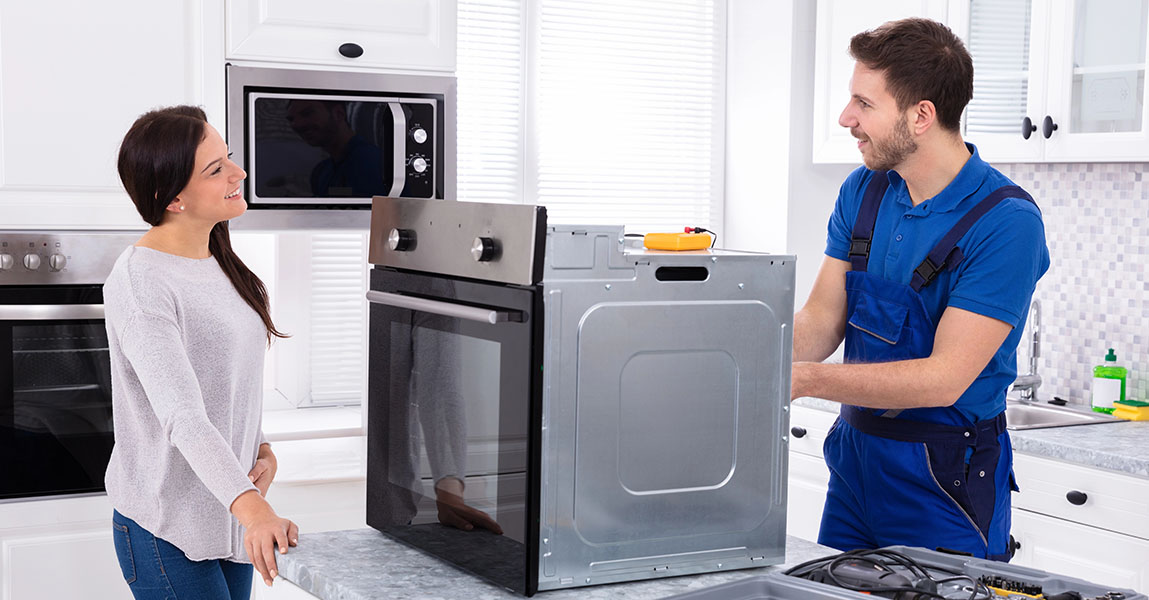Baking is as much science as it is art. We rely on the right balance of heat, timing, and ingredients to get consistent results. What often goes unnoticed is how crucial temperature sensors are to this process. When they work properly, we get evenly browned bread, cakes that rise perfectly, and cookies that bake through without burning. When they fail, the results can be unpredictable and frustrating.
How Temperature Sensors Work in Ovens
Every oven uses a temperature sensor to monitor and regulate the heat inside. This sensor communicates with the control board, which adjusts the heating elements to maintain a steady environment. In other words, the sensor acts as the brain’s messenger. Without this steady feedback, the oven could get too hot or fail to heat at all.
Our team at Quick & Pro Appliance Repair Glendale often sees issues where sensors drift out of calibration. As a result, the oven may show the right temperature on the display but actually cook hotter or cooler. That small difference can make baked goods inconsistent. For anyone who values reliable results, checking that the sensor is accurate becomes as important as choosing quality ingredients. You can learn more about our appliance repair Glendale services if your oven shows these symptoms.
Why Baking Accuracy Depends on Sensors
Timing and heat must work together in baking. A cake that requires 350 degrees for 30 minutes depends on both factors being exact. If the oven sensor reads low and allows the heat to climb, the cake may brown too fast while staying raw in the center. However, if the reading is too high and the oven underheats, baked goods can collapse or turn dense.
We often remind people that even the most advanced oven cannot deliver precision if the sensor is faulty. A difference of just ten degrees can cause problems with recipes that demand strict consistency. For instance, soufflés and custards are especially sensitive to heat changes. Paying attention to these details not only saves frustration but also protects the time and money you put into baking.
Signs Your Oven Sensor May Be Failing
Problems with baking do not always come from the recipe. Sometimes, the signs point back to the oven itself. Uneven baking across trays, food that always takes longer than the recipe states, or burnt tops with raw bottoms can suggest a failing sensor. In other cases, preheating may take much longer than it should, which signals that the feedback loop is broken.
Our team has seen many cases where people thought their oven was beyond saving, but the fix was as simple as a sensor replacement. These parts are small but vital. They wear out over time, especially in ovens that get heavy use. If you notice any of these symptoms, it may be time to have a professional check it. Sometimes, a simple adjustment can restore accuracy and extend the life of the appliance. For stove-specific help, see our stove repair Burbank page for detailed solutions.
Testing and Maintaining Oven Sensors
Anyone can take simple steps at home to check if an oven sensor is still accurate. A reliable method is to use an oven thermometer. Place it inside, set the oven to a specific temperature, and compare the reading once it preheats. If there is a gap of more than ten degrees, the sensor may need calibration or replacement.
We also encourage regular cleaning inside the oven because grease buildup can sometimes coat the sensor and interfere with its readings. Furthermore, avoid slamming the oven door since sudden force can damage the sensor or misalign it. These small habits contribute to better performance and fewer surprises. When basic checks do not solve the issue, contacting a technician is the safest next step.
Professional Help and When to Call
While some fixes are straightforward, replacing or recalibrating a temperature sensor usually requires a professional. The sensor connects to the wiring and control system, which can be dangerous to handle without training. Attempting to repair it without knowledge may cause bigger problems or even pose safety risks.
At Quick & Pro Appliance Repair Glendale, we often get calls from people after trying to solve it themselves. We always advise calling us sooner rather than later. That way, you avoid wasted effort, prevent damage, and ensure the oven is restored to accurate working order. If your sensor continues to show inconsistent results, reach out through our contact us page for direct support.
Frequently Asked Questions
Why does my oven say it is preheated but food still comes out undercooked?
This can mean the temperature sensor is not reading correctly. The oven reaches the target on the display, but the real heat inside is lower than needed.
How often should oven sensors be replaced?
There is no set schedule. However, with heavy use, they can fail after several years. Regular testing with an oven thermometer helps you know when replacement is needed.
Can cleaning the oven damage the sensor?
Harsh chemicals or scrubbing directly on the sensor can damage it. We suggest wiping gently and avoiding strong cleaners around that part.
Is it safe to keep using the oven if the sensor is failing?
It may still run, but results will be inconsistent. More importantly, inaccurate sensors can sometimes cause overheating, which may shorten the oven’s lifespan.
What is the best way to tell if my oven sensor is failing?
The simplest way is to compare a built-in temperature reading with a standalone oven thermometer. Large differences point to sensor issues.

